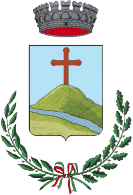Il borgo
Rione Batia
Batia era il rione dove sorgeva la sede dell’abate quando Bivongi, per 7 secoli, fu universitas (agglomerato urbano) alle dipendenze della Certosa di Serra San Bruno. Il toponimo del rione deriva dalla presenza dell’abate (Batia in dialetto). Sotto la casa del prelato, si trova la volta con i sedili in pietra dove si riuniva il Parlamento (Consiglio comunale dell’epoca) guidato dal sindico e composto da tre classi o ceti: i nobili, i cittadini con valenti professioni, e la plebe.
La convocazione del parlamento era diramata attraverso il banditore che jettava u bandu (avvisava con forte voce) nelle varie rughe (rioni) dell’universitas e con l’affissione di cartelli che ne motivavano la convocazione.
In prossimità dell’ora della convocazione si facevano suonare le campane. Per la votazione i deputati, se si trattava di voto segreto, deponevano un bussolotto in un’urna.
The Batia district was home to the abbot, when Bivongi was (for 7 centuries) a universitas (urban settlement) in the service of the Carthusian Monastery of Serra San Bruno. The name of the district comes from the abbot’s presence (which is Batia in the local dialect). Under the abbot’s home, there is the arch with the stone benches where the Parlamento (the former Town Council) used to meet; guided by the sindico, it comprised three classes: nobleman, citizens with worthy professions, and common people.
The parlamento was summoned through the town crier, who jettava u bandu (heralded) in the different rughe (districts) of the universitas, and through the signs describing the reasons for the meeting.
Bells were rang to indicate that the meeting time was drawing near. When the members of the parlamento were voted, the (secret) vote was placed in an urn.







